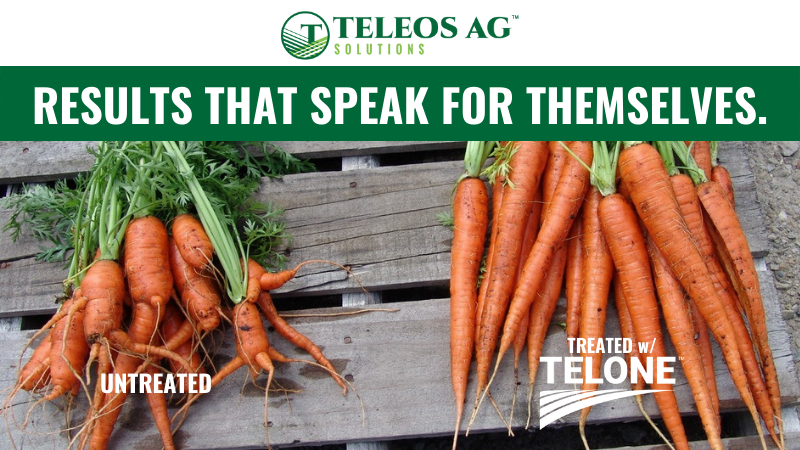Ag in the Southeast U.S. Faces a Major Turning Point

Ag in the Southeast U.S. is seeing a shift change in producer demographics with younger, more diverse backgrounds returning to the farm.
Photo by Preston Keres
Ag in the Southeast U.S. is evolving as legacy crop demand (tobacco, cotton) falters. A younger generation is beginning to sow a new saga.
Like all areas across the U.S., growers in the Southeast are closely scrutinizing and discussing hemp as a potential game-changer. Georgia Fruit and Vegetable Growers Association (GFVGA) Executive Director Charles Hall is witnessing this development play out right in front of his very eyes, both in his home state as well as across the region.
“There is a strong interest, being that it is a new crop for Georgia farmers, and obviously everyone sees this as something that is up and coming from a production standpoint,” Hall says.

Charles Hall
The longtime Georgia agriculture advocate, however, doubts whether his state will ever sign off on retail sales of the end product, CBD.
Hall cautions that much regarding the future of the crop currently in Georgia remains up in the air. USDA is still reviewing the details and 2020 growing season regulations proposed under Georgia’s state pilot program. And then recently, USDA announced its national hemp program rules, although state programs will supersede those regulations.
“Nothing is in place yet as far as whether growers will be in production this spring with hemp,” he says.
Farmer Demographics Are Changing, Too
It’s not just the crop mix taking on a new look in Georgia.
Young college-age graduates are coming back to the farm in large numbers. They’re hoping to get a piece of the ag action as the industry becomes more appealing to younger generations burnt out on city and suburban life.
“We do have a large number of family operations that the younger folks are beginning to move into leadership and ownership positions within those operations,” Hall agrees.
In Georgia specifically, Hall sees a lot more second- and third-generation farmers coming back to help run and eventually take over the family farm. He believes is at least partly due to farming’s continued embrace of technology and the younger generation’s proclivity to align with those type of careers.
“The younger producers have more exposure to technology and electronics in their everyday lives, so you’re going to naturally see more acceptance of precision ag solutions there. But that’s not to say that the older generation is dismissing technology at all,” Hall says.
“Most of the vegetable growers here in Georgia, they’re always looking for new ways to produce a product, and they’ve never been afraid of looking at new technologies or methods of production,” he adds.
Hemp’s Not the Only Winner
When thinking about the state’s ag demographics, Georgia is typically pigeon-holed as a place where they grow cotton, tobacco, peanuts, and those famous Vidalia onions and Georgia peaches, and not all that much else.
Not so fast, cautions Hall.
“If you combine all of the vegetable crops together, those crops in Georgia would easily be the No. 1 overall cash crop (in the state),” he says.
Rattling off some of the perhaps lesser known crops grown across the state like sweet corn, peppers, cucumbers, squash, and both field and greenhouse tomatoes, Hall says that altogether Georgia-grown vegetables comprise “about a $1.1 billion market.”
As for how 2019 went for Georgia growers of all crops, time will only tell after a somewhat perilous 2018 season.
“The last couple years have been tough on the agronomic crops, between the pricing situation and then Hurricane Michael coming through in 2018,” Hall says. “It’s kind of hard to say where things are at right this moment.”
Any uncertainty at the moment is mostly due to what Hall deems a very, very good harvest season thus far, but planting weather was not so good, and “there’s some late planted cotton that we’ve got to see how it looks,” he says.
New Trade Agreement Bodes Well for Growers
The pending United States Mexico Canada Trade Agreement (USMCA) would be a big boon for Georgia and all Southeast growers alike, Hall believes. As of press time, however, it sits before House representatives and will need to make a trip to the Senate floor and onto the President’s desk before becoming law.
“USMCA is a very, very good deal for U.S. ag overall. We do have some concerns in the Southeast regarding how open borders are affecting our markets and our pricing when these ag products are on the market, but we’ll deal with that as we need to,” he says.
Surely then, if USMCA passes as proposed, ag in the Southeast is poised for another golden era of high prices and sunny days for producers, right?
“It’s too early in the process to predict what will happen and how our growers will adjust to all of these challenges they face,” Hall says. “In the long run, over the next five to 10 years, we’ll have to see what changes within the industry. But sitting here today, I don’t really have a good answer for how it will all play out.”
Asked for his parting message when it comes to the current state of ag in the Southeast, Hall sounds optimistic.
“Within specialty crop ag, and particularly within the vegetable industry, you’ve got a lot of creative, ambitious, and aggressive farmers and marketers that are looking at opportunities to produce and sell more Georgia-grown products. But to predict what will happen five years down the road? I don’t know. But I am confident that we’ve got the team coming together and all the new folks coming into the industry and coming into ownership and decision-making roles.I’m anxious that we’ll see continued growth within the industry.”










